We use natural energy every single day, from cooking our food on the stove to filling gasoline in our vehicles. But have you ever wondered whether the energy we use is renewable or nonrenewable?
Both of them have an impact on our planet. Therefore, it is crucial to understand these terms to create a stable future.
For instance, as per the U.S. Energy Information Administration, an average American house consumed around 10,791 kWh (an average of about 899 kWh per month) in 2024.
With renewable resources, like solar power, this energy need can be easily met while also reducing environmental impact.
Let’s understand what renewable vs nonrenewable resources are and why it is important to transition towards clean energy.
30-Second Summary
Understanding renewable vs nonrenewable resources is vital to ensure that we know how each of them affects our climate, economy, and future.
In this detailed guide, we break down all the important information about these resources. Learn about renewable and nonrenewable resources, their advantages, disadvantages, and examples.
Additionally, find out about the environmental, economic, and social impacts with cost comparison, and the future of sustainability.
What are Renewable Resources?
Renewable energy resources are those that never deplete and are replenished continuously. Unlike some limited resources, such as fossil fuels, renewable resources never run out and cause little to no pollution.
Some important renewable resource examples are
Solar Energy
Solar energy comes directly from the sun’s rays and is captured through solar panels or photovoltaic cells. This energy is the cleanest and most abundant, and is used to generate electricity.
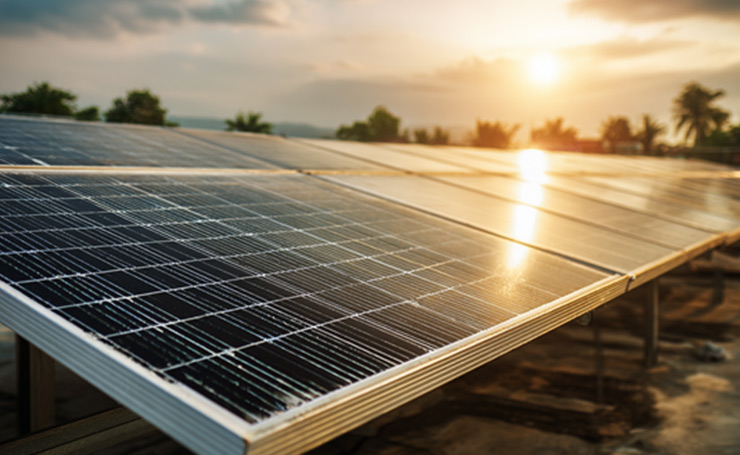
Solar energy is very common to power houses and businesses, reducing carbon emissions and the cost of electricity bills.
Wind Energy
People have been using wind energy for a long time. They used windmills to grind grain and pump water. Today, we capture wind energy using wind turbines. A turbine is similar to a windmill and has a generator that turns wind energy into electricity.
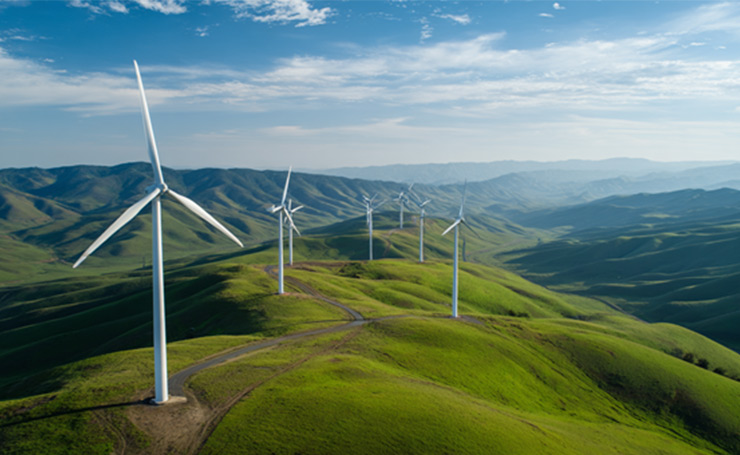
Wind farms, both offshore and on land, are contributing to global renewable energy capacity and offer a clean alternative to fossil fuels.
Hydropower
Hydropower or hydroelectric energy is produced by flowing water. The hydropower plants are situated on dams that control the flow of the river. The turbines convert the kinetic energy of water into power.

It is one of the oldest and reliable renewable energy sources. However, it should be used with caution to protect the aquatic ecosystem.
Geothermal Energy
Geothermal energy taps into the Earth’s heat stored under its surface. The core of the Earth is said to be over 6,000 °C (around 10,800 °F). We can access this heat in different ways, such as geothermal heat pumps and with steam.

This energy is available year-round and is not dependent on the weather. In Iceland, around 90 percent of people use it to heat their houses and businesses.
Biomass Energy
Biomass energy comes from plants, microorganisms, manure, and even algae. Plants absorb sunlight for photosynthesis. This remains inside them even when they die. So when these elements are burned, they release this energy.
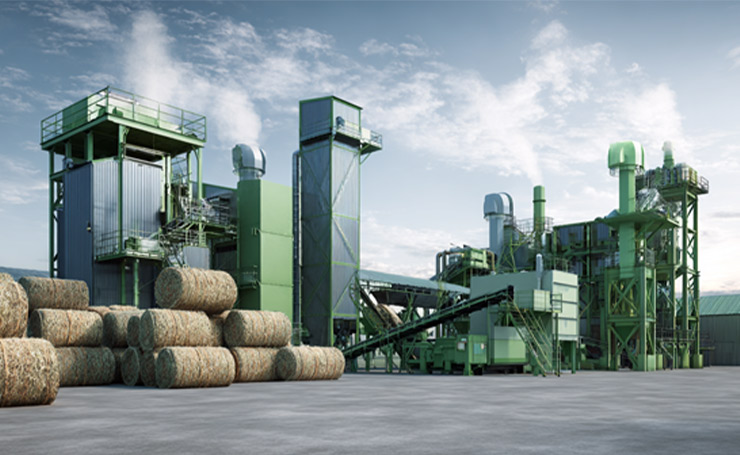
Biomass can also be converted into biofuels. Biofuels are mixed with gasoline and power vehicles. It does produce some carbon emissions, but it is considered renewable because new plants and trees can be grown to create a balanced carbon cycle.
These sources of renewable energy are important for resource stability and reducing reliance on fossil fuels. With technology, global renewable energy capacity grows as well, signaling that renewable energy is the future.
What are Nonrenewable Resources?
Nonrenewable resources are those that cannot be replenished. These resources formed over millions of years ago and cannot be replaced once they are all used. It is a major concern for humanity as we depend on these finite resources.

The nonrenewable resource examples are coal, natural gas, oil, and nuclear energy. Natural gas, oil, and coal are collectively called fossil fuels.
They are formed over millions of years under Earth’s surface from dead plants and animals. These remains are transformed into crude oil (petroleum), coal, and natural gas.
This energy in the plants and animals comes from the sun. The plants absorbed it through photosynthesis and became a part of the bodies of animals that consumed them. When fossil fuels are burned, they release this trapped energy.
Oil
Crude oil is the liquid form of fossil fuels. It is found in rocks under the Earth and is pumped through wells. This oil is used to produce gasoline and diesel for vehicles and for manufacturing plastic.

Natural Gas

Natural gas is mostly used for cooking and heating houses. It is found near the oil deposits under the Earth and consists mostly of methane. This gas is pumped using the same wells, which are used to extract oil.
Coal
Coal is a sedimentary rock formed under the Earth’s surface from compressed plant matter over millions of years. It is one of the most used nonrenewable sources for generating power and heat. Since it is solid, it is dug from the ground.

Nuclear Energy
Nuclear energy comes from radioactive elements, mainly uranium. It is produced through the process of nuclear fission, where uranium atoms are split to create a massive amount of heat. It is extracted from mined ore and refined into fuel.
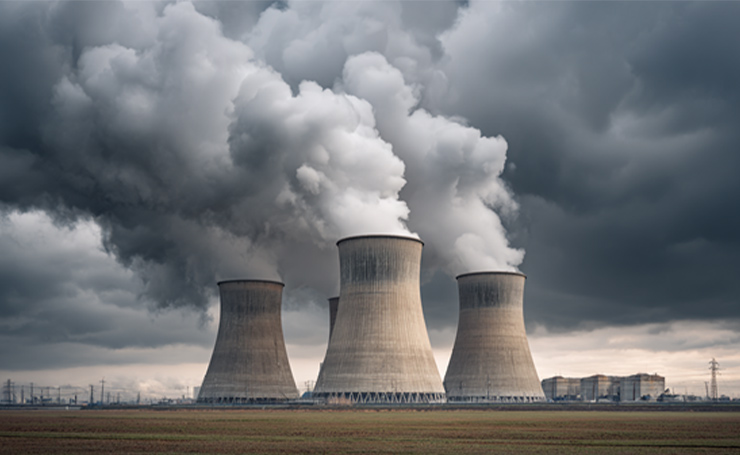
A major problem with nonrenewable energy types, apart from resource depletion, is carbon emissions. The rising level of heat-trapping carbon dioxide is the main driver of global warming.
Renewable vs Nonrenewable Energy: The Comparison
This table sums up the main differences between renewable and nonrenewable energy.
| Category | Renewable Energy | Nonrenewable Energy |
| Definition | Derived from sources that naturally replenish | Comes from limited sources that run out over time |
| Examples | Solar, wind, geothermal, biomass, and hydropower | Coal, oil, natural gas, and nuclear energy |
| Availability | Unlimited | Limited and exhaustible |
| Carbon Footprint | Very low | High carbon emissions |
| Cost (Long-Term) | Decreasing due to innovation | Increasing due to resource depletion |
| Infrastructure Need | Needs advanced storage systems and grids | Works on existing conventional infrastructure |
| Impact on Climate Change | Lessens global warming | A big cause of global warming |
| Future Potential | Important for the eco-friendly energy transition | Will gradually run out |
Environmental Impact
The environmental impact of nonrenewable resources is severe. They are the major reason for the emission of greenhouse gases that cause global warming. Here is how both energy sources impact the environment.

Carbon Footprint
A typical residential solar panel system reduces 3 to 4 tons of carbon emissions annually. On the contrary, an average house that uses coal-generated electricity contributes 8 to 9 tons of carbon dioxide every year.
Land and Water Usage
Renewable energy installations need land area, but they do not consume resources during operation. A solar farm might need around 5 to 10 acres per megawatt of capacity, while a coal farm uses less land but does extreme damage through mining.
Moreover, nonrenewable energy uses a lot of water. Thermoelectric power plants that use coal, oil, or natural gas consume 161 billion gallons of water every single day in the U.S.
Water and Air Quality
Carbon is not the only gas that is released in the combustion of fossil fuels. Other harmful gases are Sulfur dioxide (SO2), Nitrogen oxides (NOx), Mercury, heavy metals, and particulate matter. These pollutants cause smog, acid rain, water pollution, and respiratory illnesses.
| Aspect | Fossil Fuels | Clean Energy |
| Source | Formed from decomposed plants and animals over millions of years | Harnessed from natural resources like sunlight, wind, and water |
| Renewability | Nonrenewable and have a limited supply | Renewable and continuously available |
| Carbon Emissions | High, a major contributor to global warming | Low to zero emissions during operation |
| Environmental Impact | Results in air, water, and soil pollution | Minimal effect when managed properly |
| Cost Trend | Typically cheaper, but prices change | Becoming increasingly affordable with technology |
| Energy Security | Depends on extraction and imports | Creates local energy independence |
| Sustainability | Unsustainable long-term | Sustainable and eco-friendly |
Economic and Social Factors

One major debate is the cost of renewable energy and fossil fuels. When it comes to economic considerations, renewable energy options stand out.
Installation and Operational Costs
The initial installation and operation costs of renewable energy power plants may be high, but in the long run, they become much lower due to free resources and minimal maintenance. Whereas the price of fossil fuel fluctuates and depends on the global market.
Job Opportunities
The renewable energy industry is creating a lot more jobs per unit than fossil fuels. As per the International Renewable Energy Agency report, around 16.2 million people got jobs in this sector in 2023, and this number is growing.
Energy Independence
Use of renewable resources reduces the reliance on imported fuels, providing price and energy stability. This is why renewable sources are becoming more common in the world.
Experts agree that during the energy transition, fossil fuels cannot be eliminated instantly. A balanced mix of both renewable and conventional energy resources is necessary during the energy infrastructure transition toward cleaner alternatives.
Cost of Renewable Energy vs Fossil Fuels
The table below outlines the cost comparison of fossil fuels and renewable energy based on global data from 2024 to 2025.
| Aspect | Renewable Energy | Fossil Fuels |
| Average Cost per kWh | $0.03 to $0.06 (solar, wind, hydropower) | $0.05 to $0.15 (coal, oil, natural gas) |
| Installation Cost | High upfront cost | Moderate upfront cost |
| Operational Cost | Very low to free fuel (sun, wind, and water) | High because of continuous fuel extraction and transport |
| Maintenance Cost | Low to moderate | Moderate to high |
| Fuel Price Volatility | None, as the renewable sources are free | High because prices fluctuate with global markets |
| Government Incentives | Tax credits, subsidies, and rebates reduce costs | Declining subsidies due to climate goals |
| Environmental Cost | Minimal to no CO2 emissions | High pollution and carbon dioxide emissions |
| Long-Term Affordability | Becomes cheaper over time | Becomes expensive due to resource exhaustion. |
| Energy Independence | Supports local energy generation | Depends on imported fuels |
| Lifetime Value | 20 to 30 years of low-cost operation | Prices increase as resources run out |
Advantages and Disadvantages

Both energy sources have advantages and disadvantages.
Renewable Energy
Below are the renewable energy benefits and drawbacks.
Benefits
- These resources are replenished continuously.
- They offer long-term sustainability, even after nonrenewable sources run out.
- The sector of renewable energy produces more jobs.
- Many of them are now easily attainable at home, like solar energy.
- They cause minimal to zero greenhouse gas emissions.
Downsides
- Biomass, hydrothermal, and geothermal energy emit some greenhouse gases during production.
- The initial setup costs can be hefty.
- Wind turbines and solar panels do not function efficiently in specific climates.
- Harvesting biomass can cause plants and animals to be displaced due to deforestation.
Nonrenewable Energy
Have a look at the benefits and disadvantages of nonrenewable energy.
Benefits
- Due to their existing streamlined production, they are readily available.
- These resources have high energy density and provide significant power output.
- Many of these resources are affordable for people to use daily.
- These resources provide reliable energy as long as they last.
- These are not dependent on the weather.
Downsides
- The production of energy using these sources is a cause of greenhouse gas emissions.
- These resources are bound to run out, which is not sustainable for the future.
- The production causes water and soil contamination, which is harmful to land and marine life.
- The price of these resources increases as the resources become scarcer.
- Harvesting fossil fuels, like coal, is dangerous for the health of people who are involved in mining and production.
Sustainability and Renewable Growth
Due to the risk of depletion of nonrenewable energy resources, the world is focusing more on resource stability to secure long-term environmental balance.

Countries are expanding renewable energy capacity through wind, hydro, solar, and geothermal power as growth in renewable energy accelerates. Governments are now setting ambitious goals to end dependence on fossil fuels and investing in greener technologies to lessen carbon emissions.
Sustainability of renewable resources and innovations such as high-efficiency solar panels, offshore wind farms, and advanced energy storage systems have made renewable resources more accessible and reliable than ever.
Future of Energy Resources
As we learn more about energy resources and how the current ones we use impact the environment, it becomes clear that we need a large-scale change.
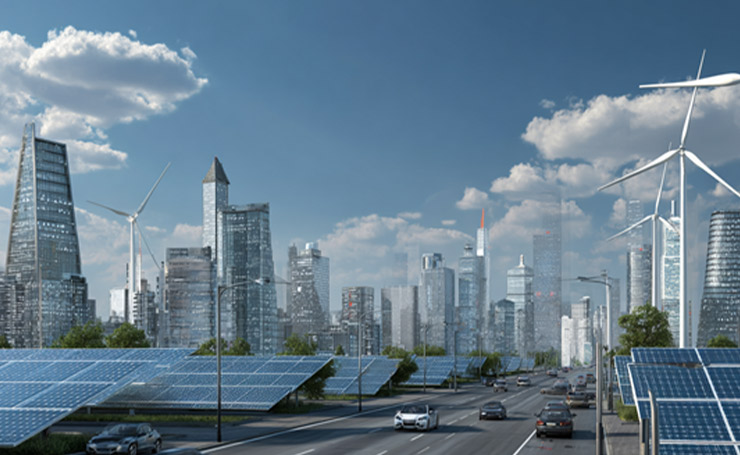
By swapping nonrenewable energy resources for renewable ones, we can stop future environmental impacts that have not happened yet. The good news is that some changes are already happening and will continue to make a big impact in the future.
For instance, modern electric vehicles (EVs) have significantly reduced carbon footprint and the need for fossil fuels. In 2023, around 25% of new vehicles purchased were EVs, and by 2030, it is expected that 60% of automobiles on the road will be EVs.
The popularity of EVs gave people opportunities to embrace more eco-friendly practices, such as EV charging stations, driverless EV delivery services, and cabs.
Moreover, many cities are also investing in many sustainable practices, such as park expansions, walkway development, and clean energy promotion in city planning.
Now, nations are creating new policies, economies, and industries that align with sustainable practices. It is clear that renewable energy resources are not just alternatives. They are the way to create a future with a healthy environment and a low carbon footprint.
The Importance of Transitioning to Renewable Energy
Switching from nonrenewable to renewable energy resources is crucial to avert the climate crisis. The benefits of renewable energy resources are not limited only to the environmental impact. It results in energy security, price stability, and environmental balance.
The global push to accept renewable energy shows that it is the present need. Every investment and policy is necessary to bring us closer to a cleaner and greener Earth.
The Bottom Line
The debate of renewable vs nonrenewable resources is crucial to understanding how each resource is impacting our environment, economy, and social infrastructure.
Despite being commonly used, nonrenewable sources are the major factor behind carbon emissions and pollution. Renewable sources have minimal to zero carbon footprint and are naturally replenished, meaning we will never run out of them.
This importance has made governments take serious actions to invest and make policies around the cleaner resources for the sake of a better and secure future.
Want to learn more about sustainable energy? Explore Green Energy Insights for more information.
FAQs
What is the Difference between Renewable and Nonrenewable Energy Resources?
The significant difference between renewable and nonrenewable resources is how quickly they can be replenished. Renewable sources are naturally replaced after a short time, while nonrenewable sources take millions of years to form. Once they run out, they cannot be replaced easily.
How do Renewable Resources Reduce Carbon Footprint?
Renewable energy resources use natural elements to generate power without burning fossil fuels. This helps reduce carbon emissions and pollution.
Why are Nonrenewable Sources not Sustainable Long-term?
Nonrenewable sources take millions of years to form. It means that they are limited and already depleting. Long-term use also has a negative impact on the climate. That is why experts emphasize renewable energy resources as the long-term sustainable solution.
What are the Examples of Renewable and Nonrenewable Energy Resources?
Common examples of renewable resources are solar, hydro, geothermal, biomass, and wind energy. On the other hand, the examples of nonrenewable resources are oil, coal, natural gas, and nuclear energy.
What is the Cost Difference of Renewable Resources and Fossil Fuels?
Initially, the cost of renewable energy resources was higher due to the installation of infrastructure. However, as technology improves and demand grows, they are becoming more affordable. Over time, renewables will become cheaper, while fossil fuels will face high expenses as they become scarce.
How can Individuals Support the transition to Renewable Energy?
Individuals can contribute to energy transition by installing solar panels, using eco-friendly transport, saving electricity, and supporting clean energy initiatives. Small daily habits contribute to a bigger global change and reduce carbon emissions.

